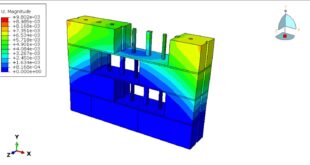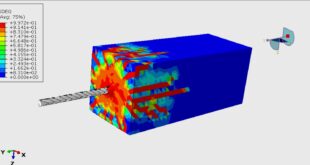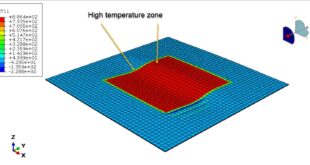Introduction to Blast Resistance Behavior of Interior Voided Slab-Column Connections Using Steel Sheets and CFRP Reinforcement
Background and Significance
Modern structures, particularly those in high-risk environments, require enhanced resistance to extreme loading conditions such as blast loads. Slab-column connections are critical zones in reinforced concrete (RC) frames, often susceptible to punching shear failure under sudden dynamic loads. Voided slabs, which reduce self-weight while maintaining structural efficiency, introduce additional challenges in blast resistance due to their reduced cross-sectional area
To mitigate these vulnerabilities, advanced strengthening techniques such as steel sheets and Carbon Fiber Reinforced Polymer (CFRP) reinforcement have been explored. Steel sheets provide ductility and energy absorption, while CFRP offers a high strength-to-weight ratio and corrosion resistance. Understanding their combined effect on the blast resistance of voided slab-column connections is essential for optimizing structural safety
You can see a figure below of the assembled parts in Abaqus
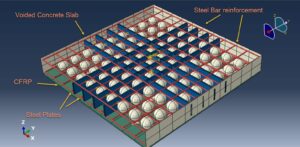
Challenges in Voided Slab-Column Connections Under Blast Loading
Punching Shear Vulnerability: Reduced concrete area around voids increases the risk of shear failure
Dynamic Load Effects: Blast-induced high strain rates alter material behavior, requiring ductile reinforcement
Progressive Collapse Risk: Failure at connections can lead to catastrophic structural collapse
Role of Steel Sheets and CFRP Reinforcement
Steel Sheets: Enhance energy dissipation through plastic deformation, improving ductility
CFRP Reinforcement: Increases flexural and shear capacity while preventing brittle failure
Hybrid Strengthening: Combining both materials can optimize blast resistance by balancing strength and ductility
Research Objectives
This study investigates
The blast resistance behavior of voided slab-column connections
The effectiveness of steel sheets and CFRP in mitigating punching shear failure
After the simulation, all results such as stress, strain, damage, failure, deformation, CFRP damage, and others are available. You can see some figures for the results below
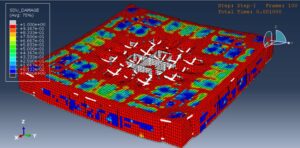
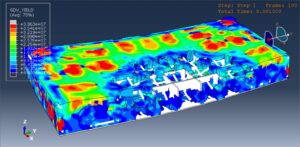
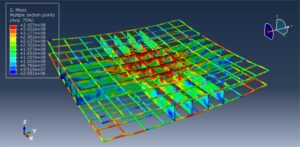
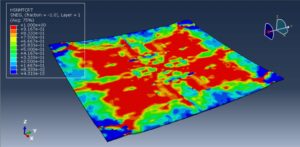
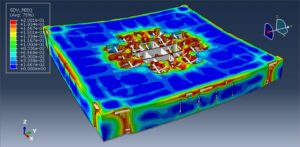
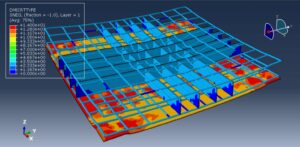
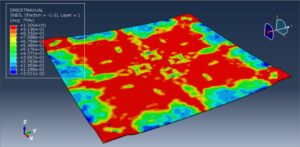
You can provide this simulation’s CAE, INP, and English video files here. The price of these files is Twenty-Six Euros. You can click on the button below to begin the process
Our Payment methods are: Tether, Bitcoin, TRX, PayPal, Visa, or Mastercard. Just before payment, send us an email to this address: abaqusfem.com@gmail.com
 Abaqus tutorials Abaqus tutorials
Abaqus tutorials Abaqus tutorials
